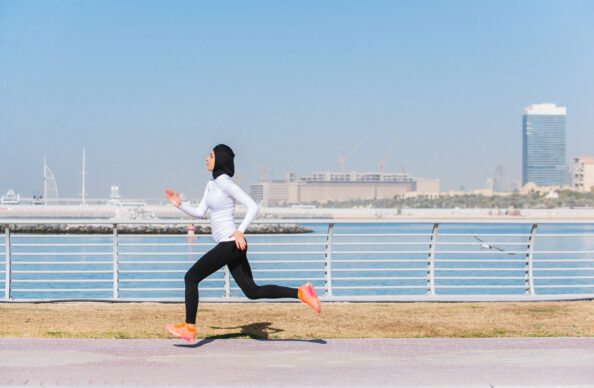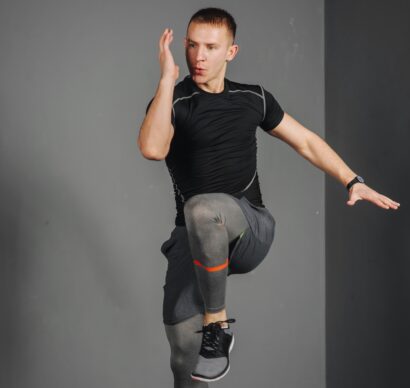by Mike Giunta, DPT, CSCS
With gyms being closed and home exercise equipment often in small supply, many people are taking to the streets to walk, jog or run. If running is not typically a large part of your exercise routine, you may be exposing yourself to potential injury due to lack of progressive loading to prepare for this type of activity.
Being the longest tendon in the body, the Achilles tendon is particularly vulnerable when initiating a running regimen. This area, that connects your calf muscle to your heel, is particularly susceptible to rupture with running, jumping and rapid accelerations or decelerations. It also may manifest as a tendinopathy, either in the mid-substance of the tendon or at the insertion where it connects to the calcaneus (heel bone).
If you’re experiencing pain in this area, there are a few immediate actions to take. Surprisingly, they do not include stopping running! First, I suggest unloading the tendon with this heel lift. Using a heel lift is an extremely important step in the process, as you need to relieve stress on this tendon around the clock. It’s inexpensive and should be worn in your shoe while walking or running. As the pain starts to subside, this heel lift allows you to peel off layers to progressively reintroduce more stress to the tendon.
Calf Foam Roll (30 sec-1min, 2-3 x per day)
Tightness in the posterior chain is common with many runners. It’s important to combat this with self-myofascial release. Using a foam roller up and down the back of the lower leg will help reduce stress on the tendon stemming from gastrocnemius and soleus tightness without the risk of increasing damage.
Eccentric Calf Raises (3 x 15 reps, 2-3x/day) Progressive loading of the tendon is important to remodel the damaged tissue. When performing this exercise, raise up on 2 feet, mainly with the uninjured leg. At the top, transfer your weight entirely to the injured leg and lower yourself slowly on a 3 count. Please note: this may cause soreness in the area – THIS IS OKAY!
Sidelying Hip Abduction (3 x 30 reps, 1x/day) Glute weakness is common with long distance runners and may have aided in putting you in this position to begin with. If your glutes aren’t engaged while jogging, you’ll be putting more stress on the distal tissues, making them more vulnerable to injury. Placing your back against a wall during this exercise will help keep you in the proper position.
Arch Raises (3 x 15 reps, 2x/day) Strengthening the muscles that your shoes generally protect is another important step in this process. Try to keep your entire foot on the ground and raise your arch. This may be awkward at first, but keep working through it. As this motion improves, work on squeezing your glute muscles at the same time to further connect the chain.
Ankle Mobility (2 x 10 reps, 2x/day) Let’s be honest – if you’re a runner, your ankles are probably tight. Work through this lunge, with or without a band.
*Progression: Eccentric Heel Raises Off Step Once performing this exercise from the floor become a breeze, move onto a step and lower your heel past midline. Once that becomes easy, try adding weight by either holding onto dumbells or a backpack full of books.
If you’re feeling Achilles pain, try these exercises out as a first step. Feel free to reach out for further guidance or to schedule an appointment with a physical therapist.




